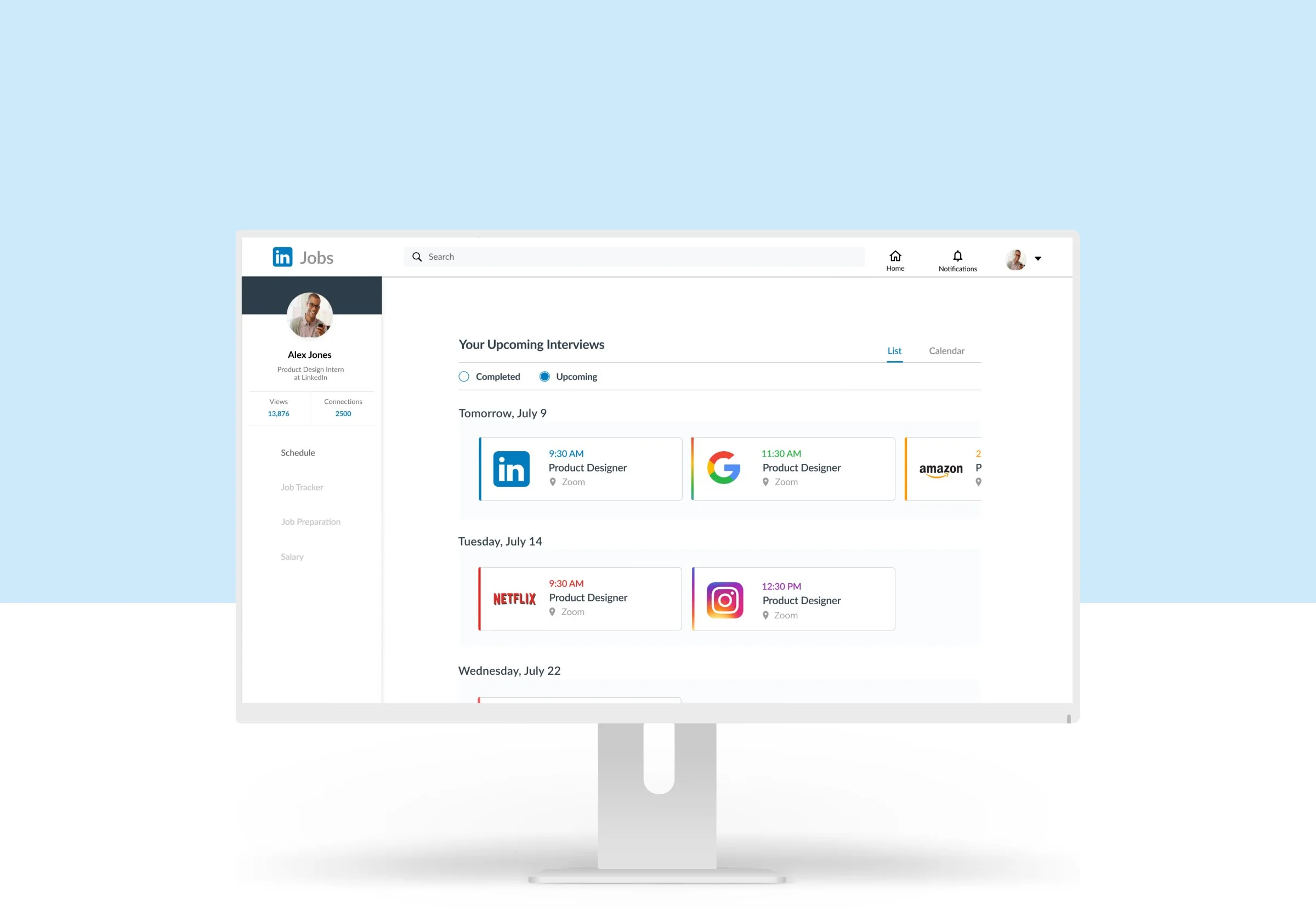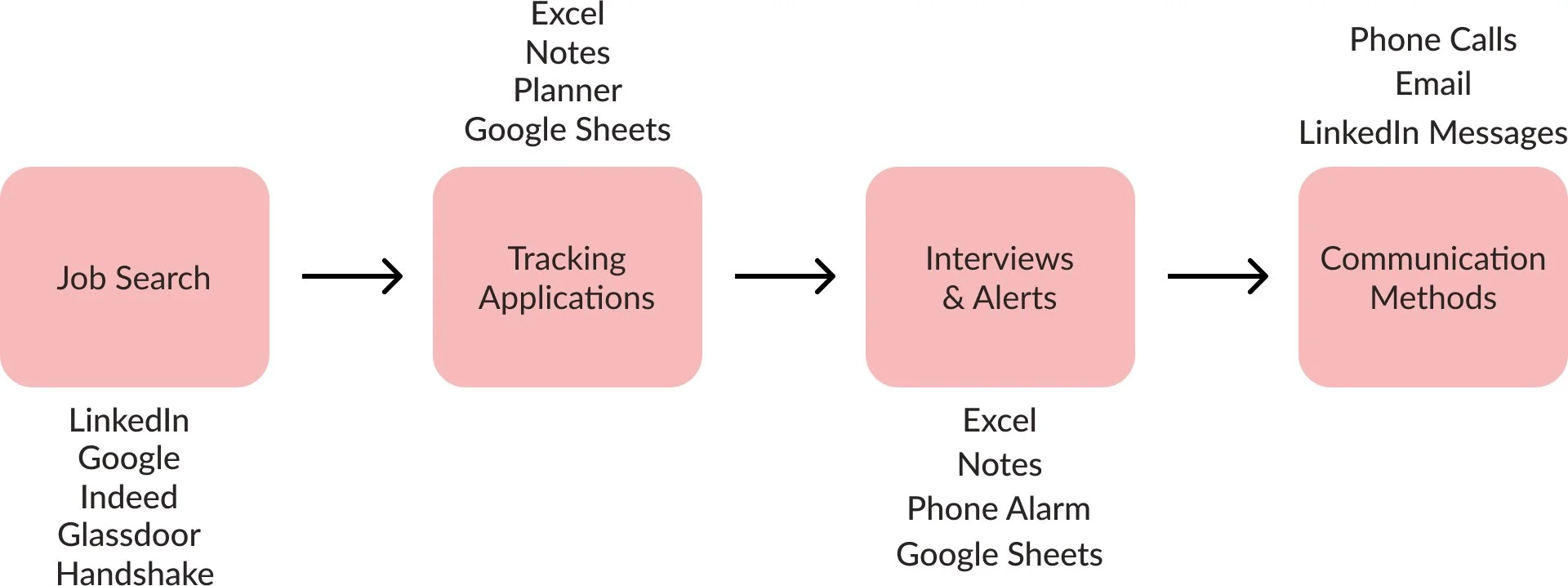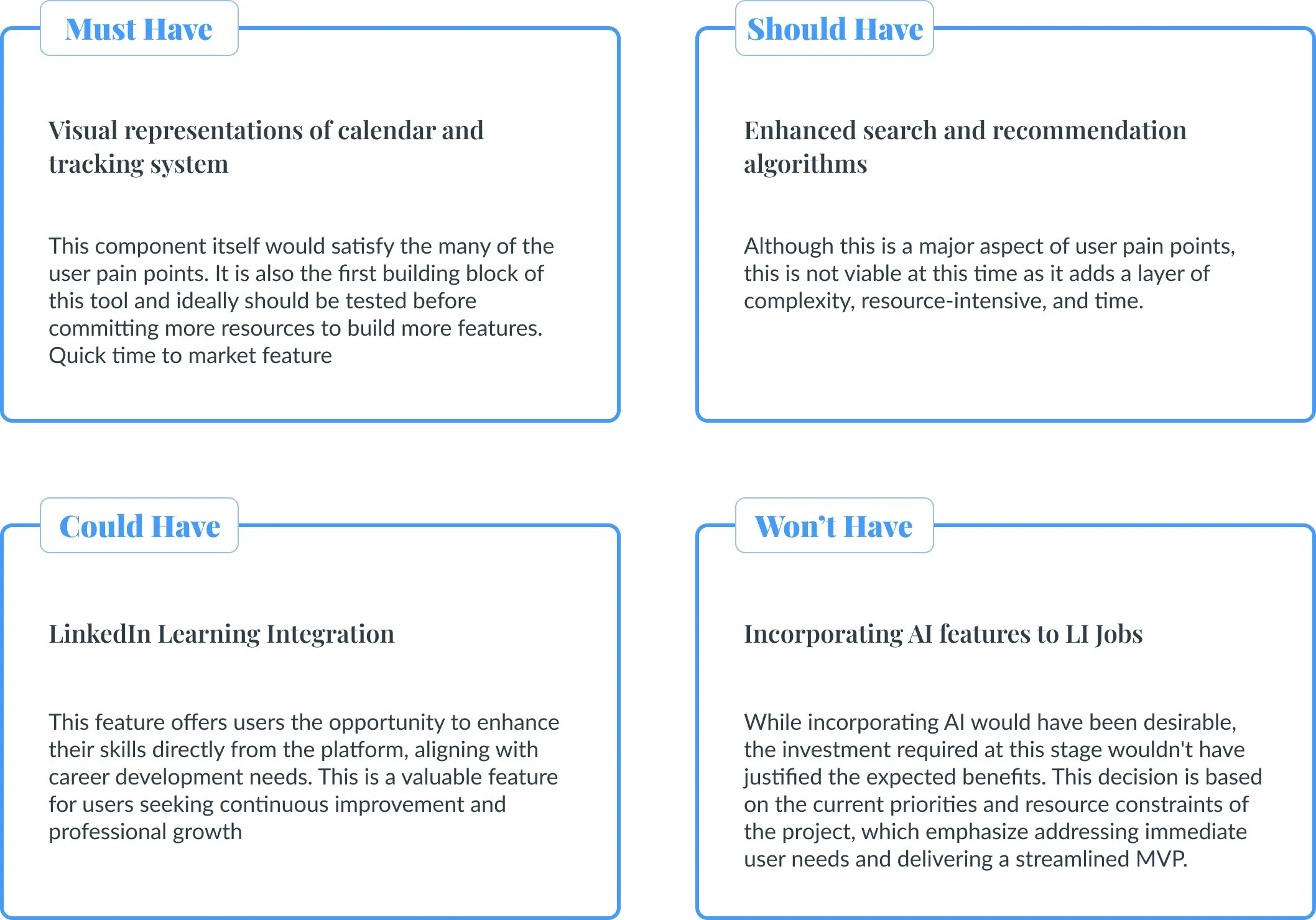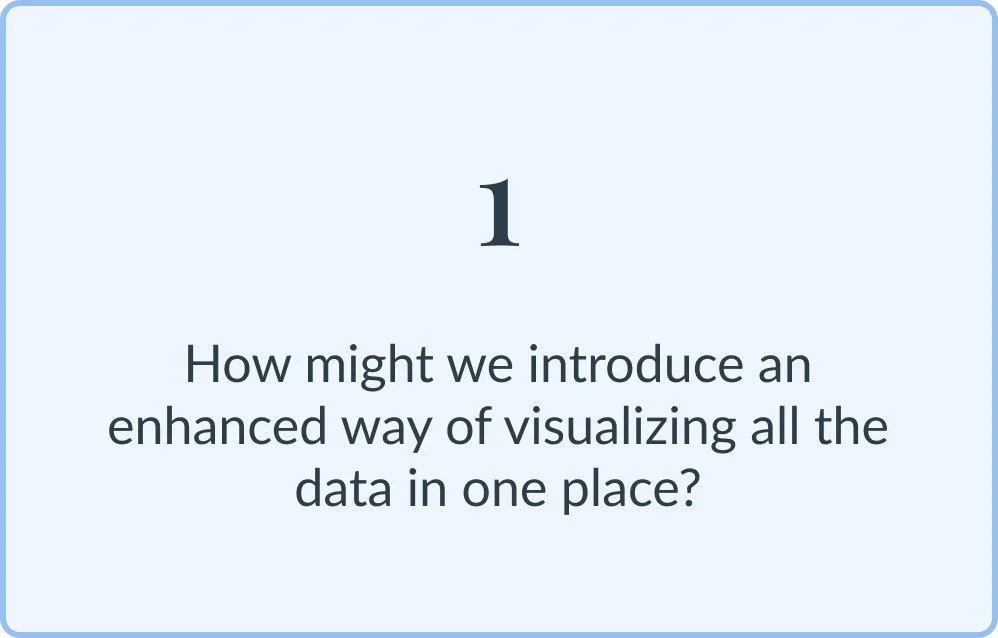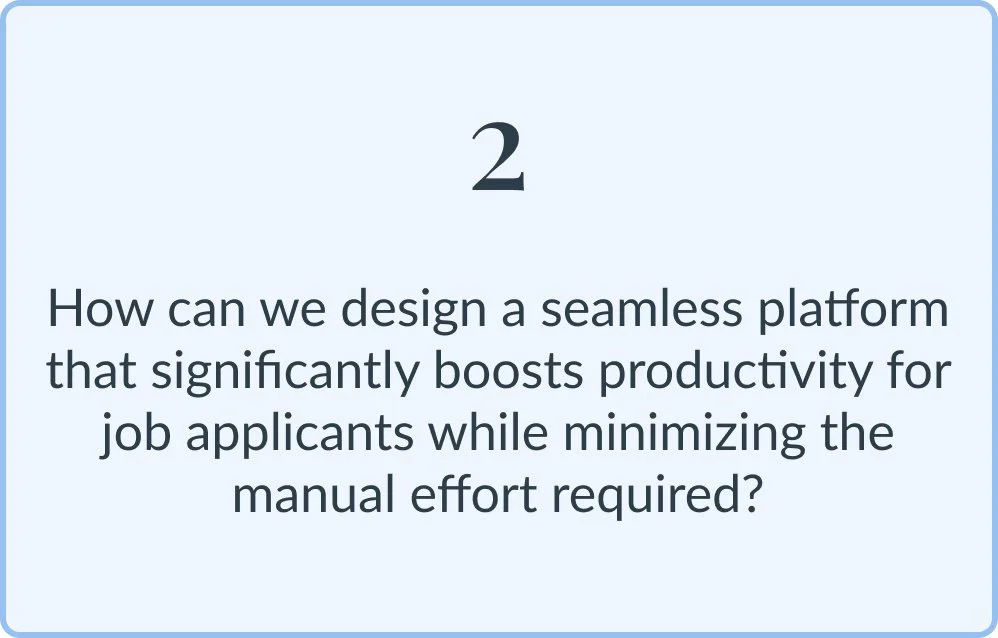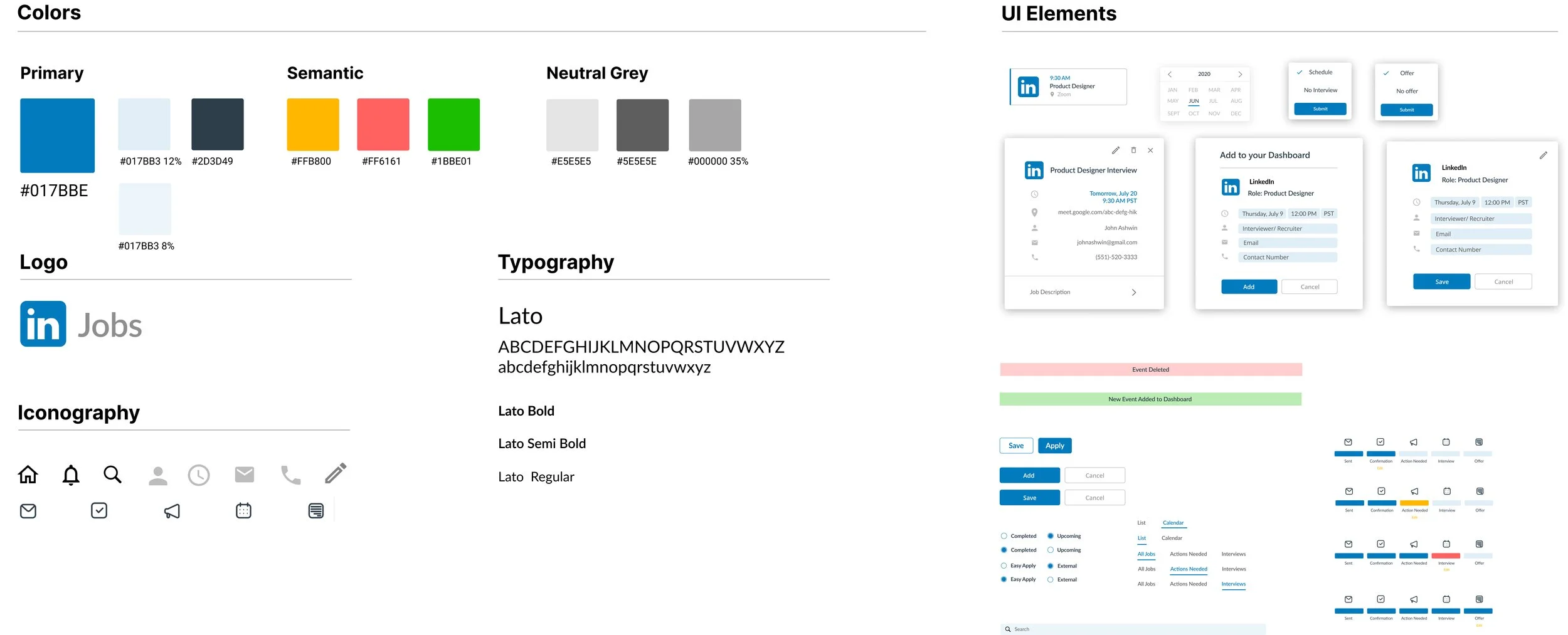Empowering Applicants on LinkedIn
Driving efficiency and engagement with innovative, user-focused tools to transform the LinkedIn job search experience.
LinkedIn job seekers often rely on external tools like Google Calendar, Sheets, and Excel to organize and track their applications. This fragmented approach limits efficiency and transparency in the job search process.
Context
To craft a unified solution that improves the job search journey by fostering transparency, better organization, and increased productivity for job seekers.
Aim
Team and Duration
Team of 4 (Myself + 3 UX Designers) | 3 Weeks
Collaborated closely to translate research insights into practical design solutions within a condensed timeline
Observation
MVP Focus and Feature Prioritization
Design
Testing
Style Guide
Reiterate, Test ( and repeat)
Process
Product Manager, Designer, and Researcher
I led research initiatives to identify user needs, evaluated the existing LinkedIn Jobs product, and developed new features to optimize user experience and simplify workflows.
My Role

INITIAL OBSERVATION
During the COVID-19 pandemic and the surge in remote work, I recognized a significant potential to improve the LinkedIn Jobs platform. Despite its many valuable features, there are essential enhancements that could boost its functionality. Being a job seeker myself, I wanted to dig deeper to see if other applicants were facing the same issues and set some research goals in mind:
What is the present condition of the job market?
What are the primary factors driving and impeding job seekers in today’s job market?
Could you describe the typical job-seeking experience for applicants in the current market landscape?
Before my primary research, I assessed LinkedIn's job application process and conducted a competitive analysis using a feature comparison matrix.
This is the three-phase job application process, with a strong emphasis on the communication method used at each stage.
Feature Comparison Matrix shows market research that evaluates contrasting capabilities from multiple services.
In my subsequent interviews with job applicants, I confirmed the presence of shared issues while also identifying new user pain points as well
During user interviews, I posed a series of questions to gather insights on participants' utilization of the LinkedIn Jobs platform. Additionally, I delved into their experiences, difficulties, and requirements throughout the entire application process.
Key Insights
80% of users conveyed that the application process through LinkedIn was tedious and time-consuming because they would need to use external tools during the post-application phase of the tracking process. Here is the current flow of the LinkedIn Application/Post-Application process illustrating flaws and/or time-taking actions identified by the users
Easy Apply feature was used way more than External Apply due to ease of use as well as a slightly easier tracking capability
With so many applications, interviews, and deadlines to track, it was hard to go through each of them over and over to confirm that nothing was missed
60% of the users mentioned that experience levels on job posts don’t match job titles such as “entry level.”

Feature Prioritization
A variety of pain points emerged during interviews, highlighting diverse user challenges. These pain points drove a brainstorming session to generate potential features. Subsequently, we prioritized these features for the MVP phase, employing the MoSCoW framework. The prioritization process considered user insights, project viability, timeline constraints, resource requirements, and, notably, the potential impact on our success metrics.

MVP FOCUS SPACE
For the MVP, we have honed in on 2 primary areas of focus to align with our product vision of improving the experience of applicants
How might we introduce an enhanced way of visualizing all the data in one place?
How might we create a seamless platform that increases productivity while reducing leg work for job applicants?
Our research revealed that 70% of users interviewed were visual learners. They mentioned that, given their busy schedules, managing applications to numerous companies, each with multiple interview phases, was an overwhelming effort.
So I designed a Scheduling feature
Scheduling
Whether applicants are applying through LinkedIn or an external site, all the interview information can be provided here
Importance of this feature
Increases productivity and is a time saver for both applicants and recruiters!
Users would have both a “calendar” and a “list” functionality based on their preferences to view their events
Clear Visuals
Importance of this feature
Increases usability for target users
Through my research, I identified 3 key opportunity areas for improvement:
Job applicants resorted to third-party tools for managing post-application phases, causing inconvenience.
Although LinkedIn tracked applications through the "My Jobs" section, external applications remained cumbersome.
Applicants found interview processes lengthy and unclear, stressing the need for transparency and feedback.
So I designed a Job Tracking feature
How Does This Add Value?
Addressing candidate workload is an opportunity LinkedIn can capitalize on to enhance its position as a comprehensive career platform for both candidates and recruiters, reinforcing its competitive edge
This feature caters to both LinkedIn applications and External Applications.
This way, all tracking stays on one platform!
Streamlined Post-Application Tracking

So What Did Users Think?
Usability Testing was conducted on critical high-fidelity screens involving a diverse group of 5 users.
This testing phase allowed us to gain valuable insights into the user experience, identify potential pain points, and refine the design for optimal usability.
How might we introduce an enhanced way of visualizing all the data in one place?
How might we create a seamless platform that increases productivity while reducing leg work for job applicants?
The overall usability testing was positive with several high-priority areas highlighted for improvement for the job tracking feature because WE MISSED A PART OF THE PUZZLE!
Before

Style Guide
While we adhered to the established LinkedIn UI Design System, we incorporated subtle hints of color to maintain consistency and improve the visuals based on user testing.
This approach ensures that our design maintains the brand’s identity while offering a visually engaging and user-friendly experience.

Introducing the New and Improved Job Application Experience
So yes, we did not waste a minute to create that style guide and here you can see the difference and consistency in the UI.
After

1. A clean, consistent user-friendly job application header on LinkedIn with filters. 2. In the LinkedIn product design role, the red color was implemented to signify rejection, enhancing transparency for users, and preventing users from being "ghosted."
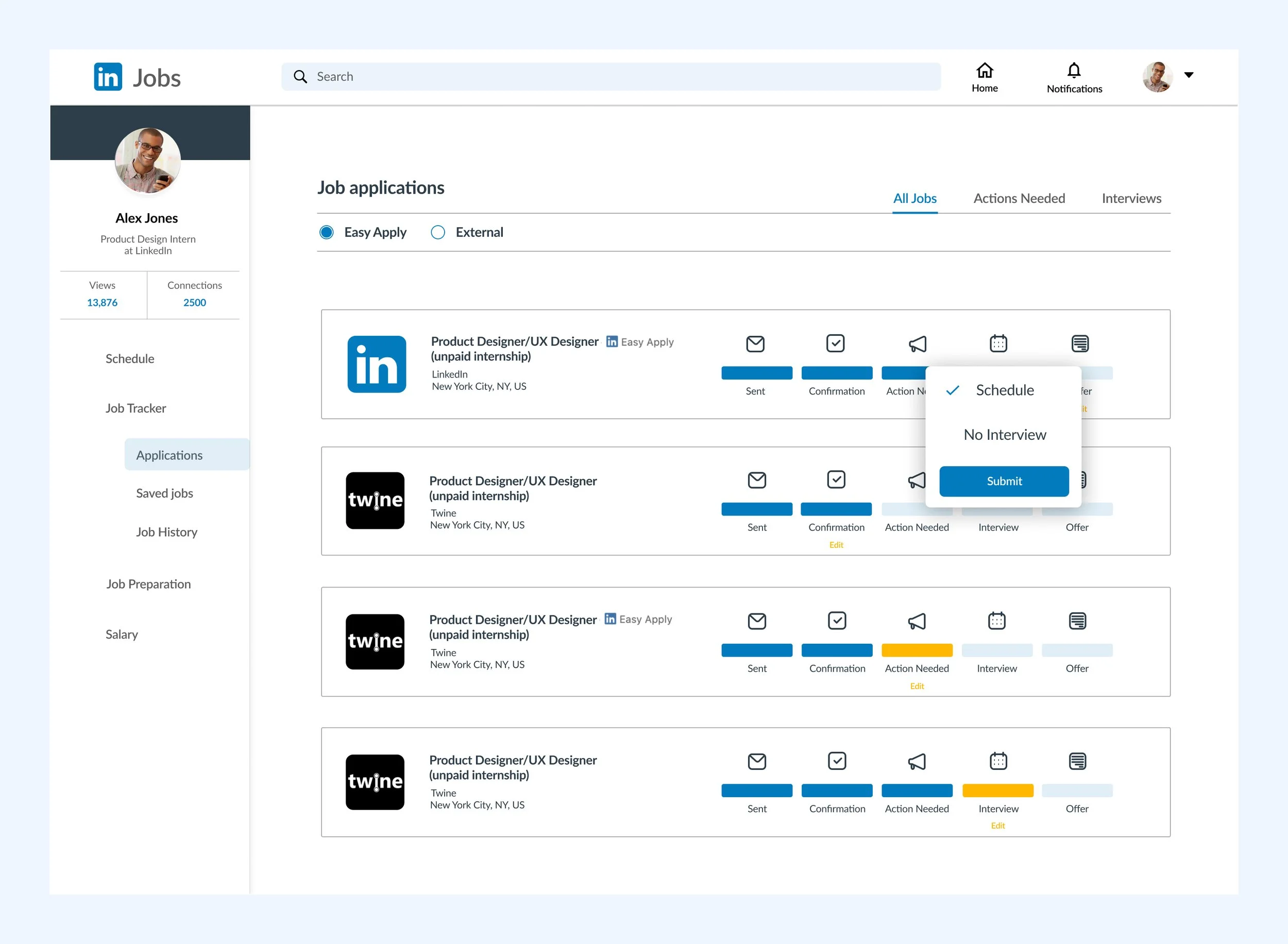
1. An intuitive clickable area for enhanced user-friendliness. 2. The Left Pane is consistent with Calendar and Scheduling Screens now.
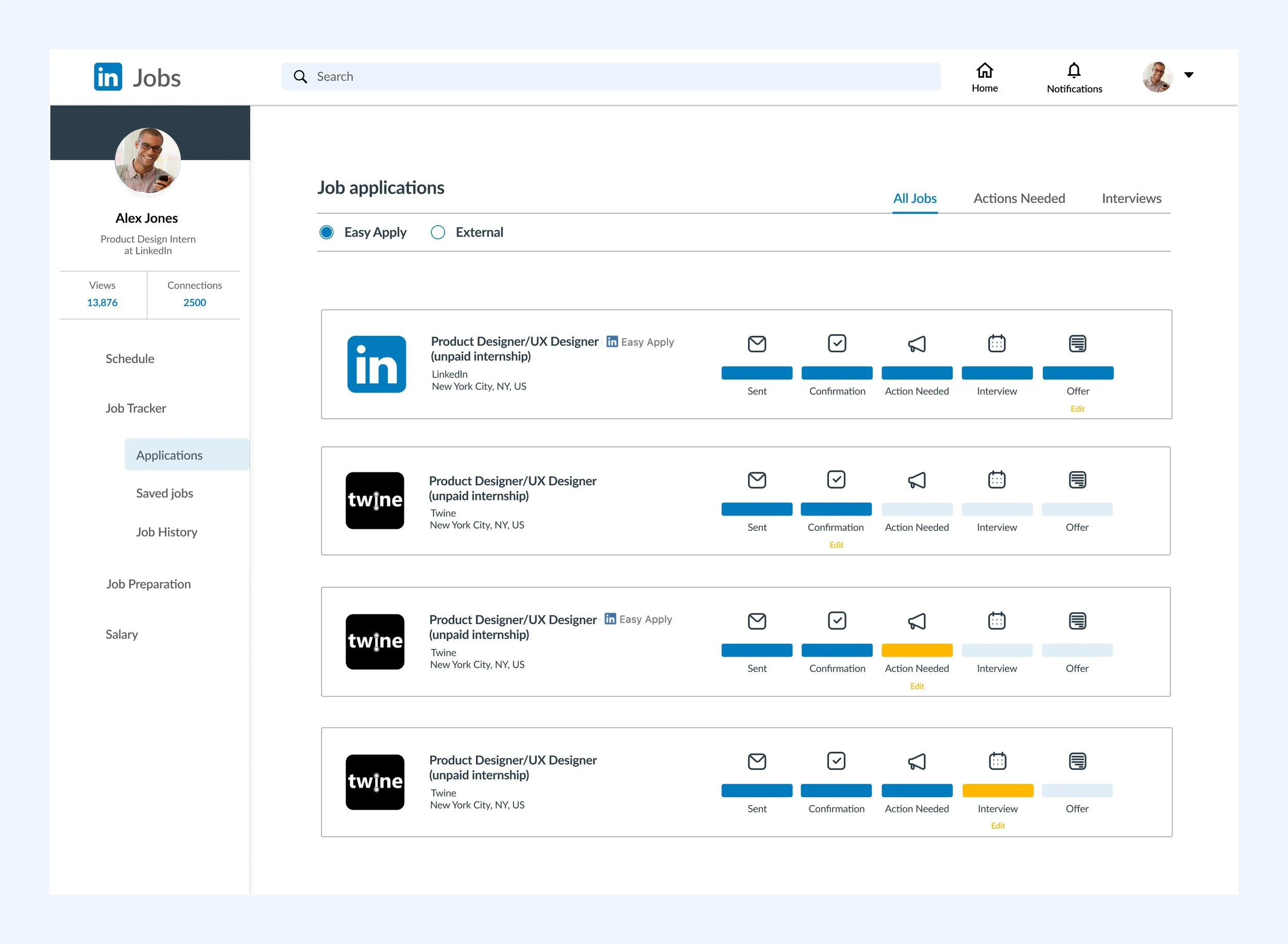
1. Yay! Alex got the LI offer! 2. Yellow color for action needed from the user side
Takeaways
Continuous communication
Maintaining open communication was critical to ensuring consistency throughout the design process. This would have significantly boosted efficiency and alignment when developing new features.
Importance of a Design System
A key takeaway from this project was realizing the missed opportunity of not implementing a design system. Without it, we faced challenges maintaining interface consistency and optimizing collaboration during brainstorming and prototyping. In retrospect, a robust design system would have streamlined development, making the project more cohesive and user-focused.
Levaraging A/B Testing
Running A/B tests proved to be an efficient way to evaluate feature variations. This process provided actionable insights into user behavior, allowing for better feature prioritization and reducing potential risks during development.
With more time…
Exploring Growth and Monetization
I’ve identified potential strategies to drive growth and monetize LinkedIn Jobs, which I’d be excited to discuss further.
Iterating with Usability and Technology Advancements
With technology evolving rapidly, I would prioritize another round of usability testing to leverage the latest advancements. This approach would expand the product’s capabilities, ensuring it remains adaptable and responsive to changing user needs through continuous refinement.
Deep Dive into Feature Exploration
I would further explore features that couldn’t be fully integrated in the initial project phase, to enhance user engagement and satisfaction
Optimizing LinkedIn’s Algorithms
I’d delve deeper into optimizing LinkedIn’s algorithms to better address recruiter challenges. By understanding the multifaceted nature of these issues, we could develop solutions that elevate the overall user experience.
